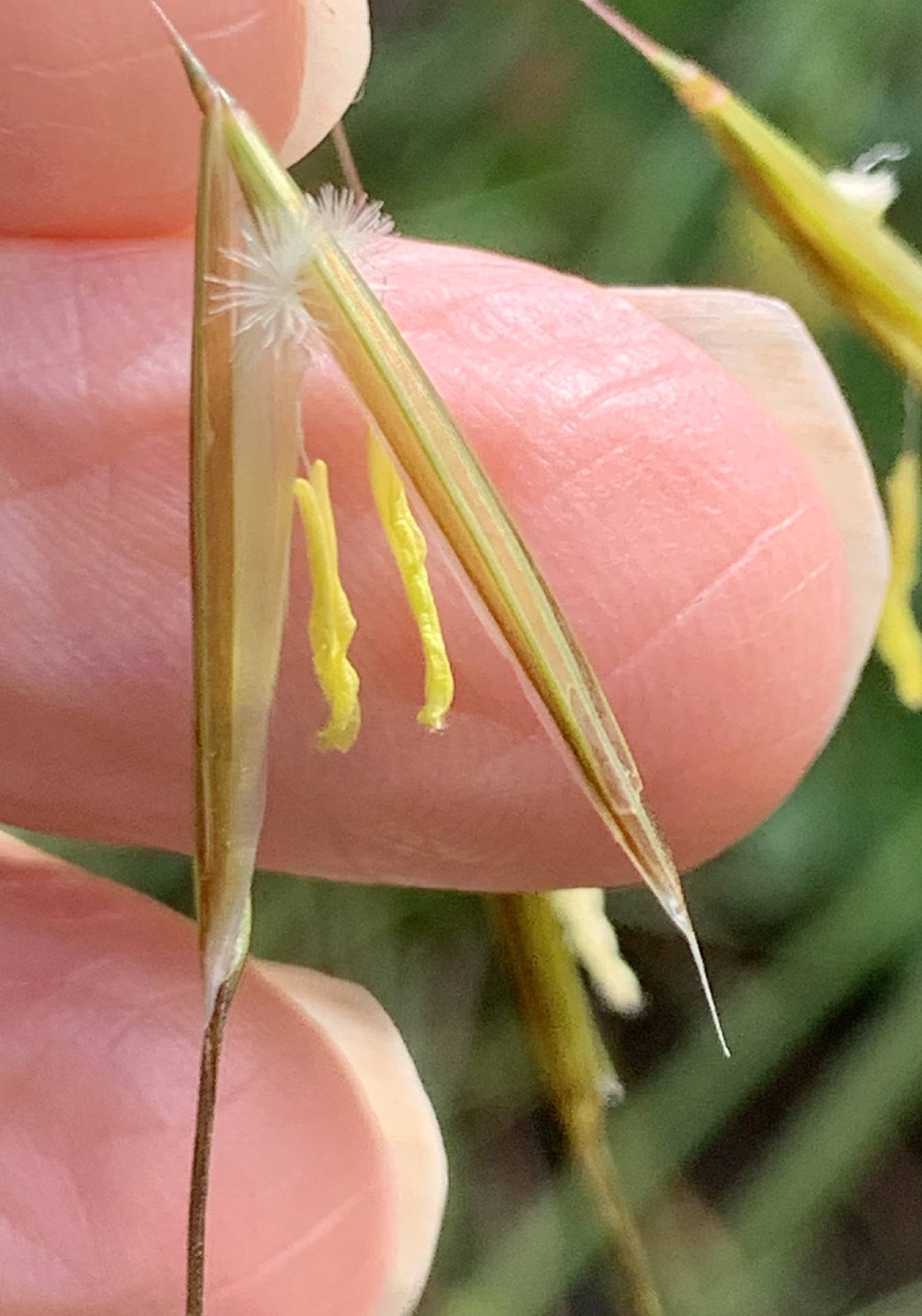Stipa
|
Family: Poaceae |
Plants annual or perennial; tufted or cespitose, not rhizomatous. Culms 10-200 cm, herbaceous, not branching at the upper nodes; basal branching usually intravaginal; prophylls shorter than the sheaths. Leaves mostly basal; cleistogenes usually not developed; sheaths open; auricles absent; ligules membranous, sometimes stiffly so, upper and lower ligules similar or upper ligules longer than those below; blades prominently ribbed, usually tightly convolute when dry. Inflorescences terminal panicles, usually contracted. Spikelets 12-90 mm, with 1 floret; rachillas not prolonged beyond the base of the floret; disarticulation above the glumes, beneath the floret. Glumes much longer than the floret, hyaline to membranous, usually acuminate, 1-3-veined; florets 3-27 mm, terete to slightly laterally compressed; calluses (1)1.5-6 mm, sharp or blunt, antrorsely hairy; lemmas coriaceous to indurate, tan to brown, smooth, glabrous or hairy, hairs sometimes uniformly distributed, sometimes in lines, margins flat, slightly overlapping at maturity, apices awned, lemma-awn junction evident; awns 50-500 mm, persistent, usually once- or twice-geniculate, sometimes plumose in whole or in part, basal segment often strongly twisted; paleas from shorter than to subequal to the lemmas, glabrous, 2-veined, not keeled, flat between the veins, apices sometimes scarious, sometimes similar in texture to the body; lodicules 2 or 3, glabrous or pilose; anthers 3; styles 2(3,4), free at the base, if 3 or 4, then 1 or 2 distinctly shorter. Caryopses fusiform, not ribbed. x = 11. Name from the Latin stipa, 'oakum' (a loose bunch of fibers), alluding both to the feathery inflorescences and the use of Stipa tenacissima L. [ = Macrochloa tenacissima] as a source of cordage. Spikelets 1-fld, articulated above the glumes; glumes about equal, lance-linear, papery, with broad scarious margins, the first 3-veined, the second 5-veined, the nerves parallel, only the middle one extending to the often slenderly prolonged tip; lemma shorter than or equaling the glumes, indurate, terete, linear to narrowly fusiform, obscurely nerved or nerveless, villous at least at the base, the margins meeting or overlapping around the membranous palea, and with a bearded, elongate, sharp-pointed callus; awn elongate, terminal, articulated with the lemma but persistent, usually twice geniculate, the lower one or two segments hygroscopic and twisted; perennials with narrow, elongate, often involute lvs and open or contracted panicles of large spikelets. 300, nearly cosmop. Gleason, Henry A. & Cronquist, Arthur J. 1991. Manual of vascular plants of northeastern United States and adjacent Canada. lxxv + 910 pp. ©The New York Botanical Garden. All rights reserved. Used by permission. |

